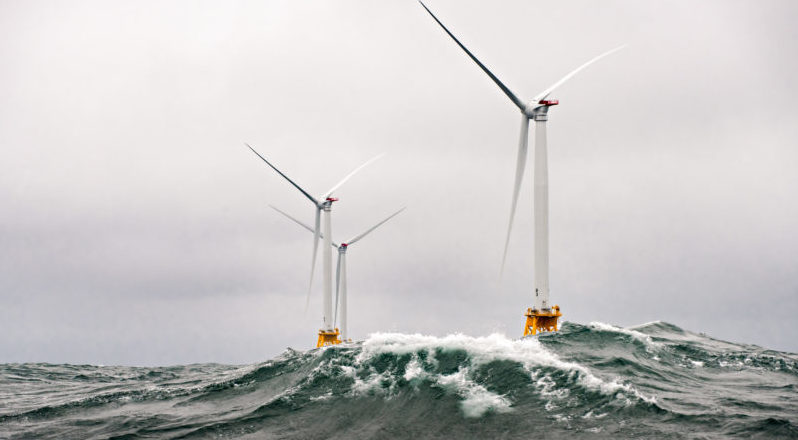Saying “offshore wind will play a big role” in energy plans, Interior Secretary Ryan Zinke announced on Friday draft guidelines to give wind farm developers more flexibility in their construction and operations plans.
The move appears to finally commit the Trump administration’s support for offshore wind, coming just a week after Zinke said the Department of Interior will open much more of the Outer Continental Shelf (OCS) to oil and gas exploration.
The Bureau of Ocean Energy Management will permit wind developers the option of using a “design envelope” approach to planning, which would account for the rapid pace of development in the industry.
That means plans for wind arrays off the East Coast for the mid-2020s will be allowed to delay some key decisions, such as their choice of turbine size and models, until later in the process “at the more commercially advantageous time,” according to Interior officials.
In Europe manufacturers like Vestas are building turbines of 8 megawatt peak output and higher, supersizing machines that industry advocates predict will rapidly increase efficiency and reduce wind power’s long reliance on government subsidies. Vestas and Clemson University in South Carolina are testing a 9.5-megawatt turbine that could see use in U.S. waters.
Wind developers asked BOEM to consider the design envelope concept used for permitting in some European countries, the agency says. With U.S. companies like Deepwater Wind learning from two decades of wind power in Europe, and European companies like Statoil investing in East Coast federal leases, the U.S. industry could vault to using the most advanced turbine designs when large offshore arrays are built in the 2020s.
After the 2016 presidential election there was some uncertainty on how offshore wind project would fare with the federal government, given President Trump’s ambiguous personal attitudes. In public speeches Trump had been critical of wind power, calling it unreliable and a killer of birds. In his own business career, Trump unsuccessfully strove to block an offshore wind project near one of his golf courses in Scotland.
As Congress assembled it tax bill in late 2017, it appeared the wind industry’s political adversaries were on the verge of killing its vital tax credits. But wind developers escaped that threat, not least because inland wind power generation is a major business and employer in Republican-leaning states like Texas and Iowa.
Wind power critics had hoped the Trump administration, with its close ties to the oil and coal industries, would be hostile to wind developers. But that has not turned out to be the case. At the 2017 International WorkBoat Show in New Orleans, Walter Cruickshank, BOEM’s acting director, made it clear that the Trump administration in some ways is following the Obama administration’s policy of “all of the above” when it comes to offshore energy development.
“The Outer Continental Shelf’s offshore wind potential is a tremendous asset and part of the administration’s ‘America First Energy Plan’ to make it easier for industry to do business here.” Zinke said in his announcement Friday. “And, now more than ever, we must use every tool at our disposal to ensure an energy-secure future – one that promotes jobs and is affordable, competitive and safe. Offshore wind will play a big role in this future.”
BOEM will also apply the administration’s attitude of streamlining review and permitting processes to wind projects, like other infrastructure work, Interior officials said. Using the design envelope approach would allow BOEM to analyze the environmental impacts of the proposed project in a manner that could reduce or eliminate the need for subsequent environmental and technical reviews without sacrificing appropriate environmental safeguards,” according to the agency.
On Jan. 31 BOEM will host an online seminar about its draft guidance on wind project design, with an opportunity for participants to send comments. The session will be held from 1 p.m. to 3 p.m. EST, online at https://orep.adobeconnect.com/r1sfnl5w158k/
Participants can also call into teleconference by dialing (866)632-3744, and using the passcode 4082141#.




